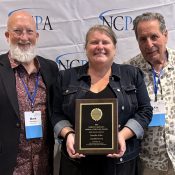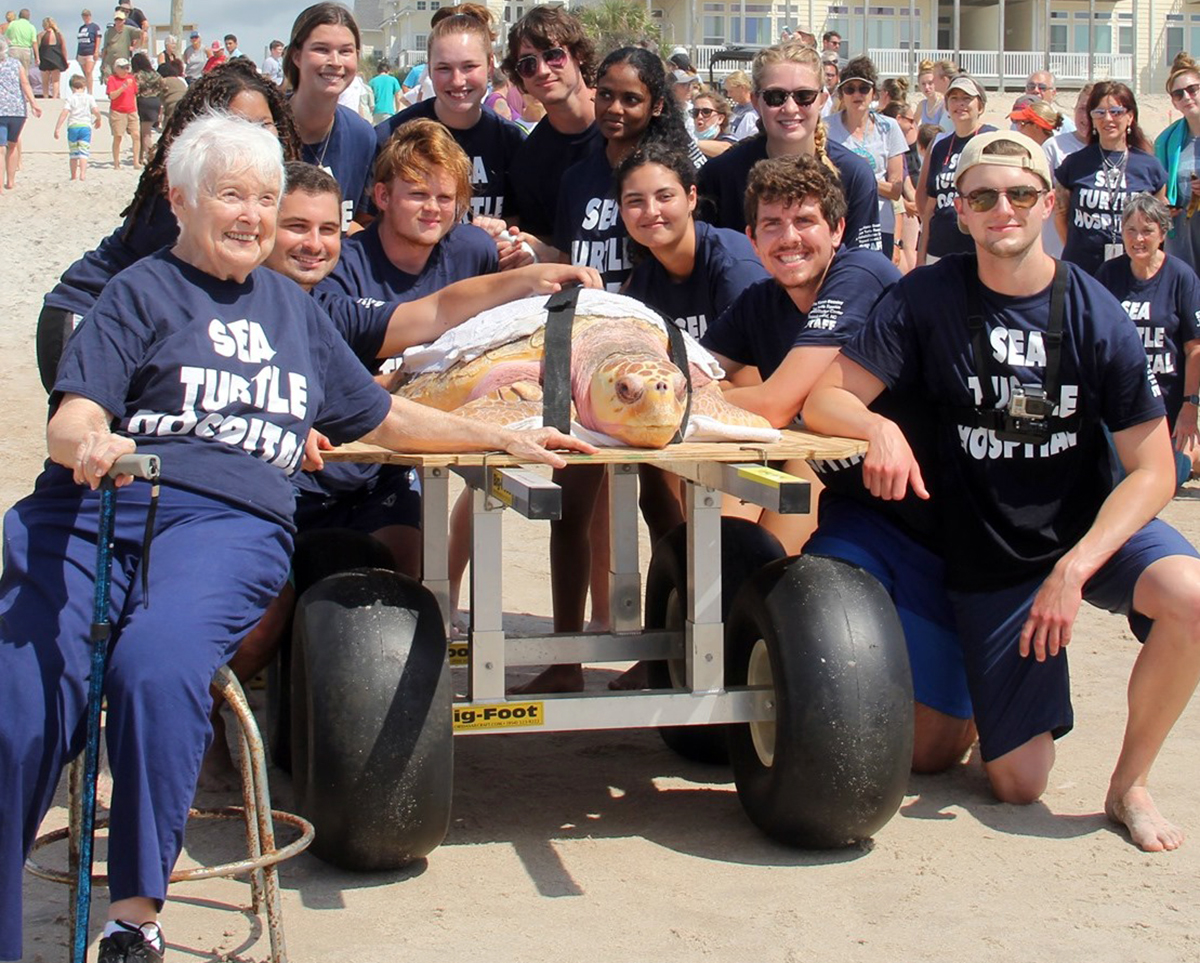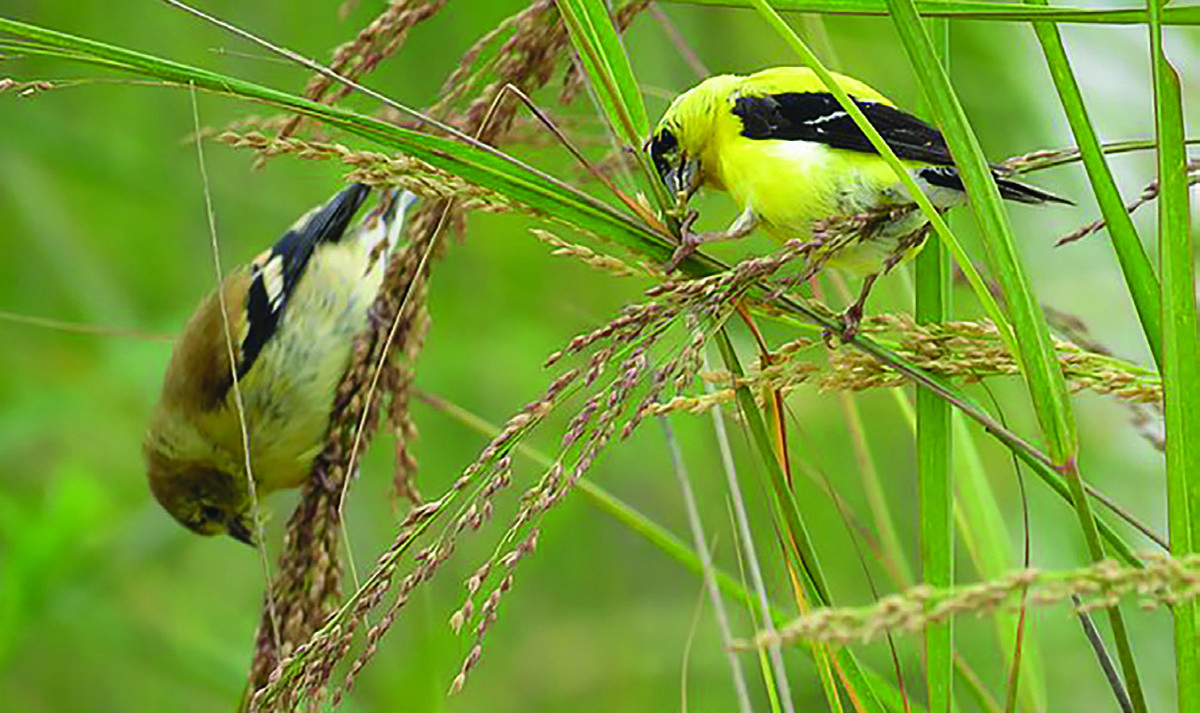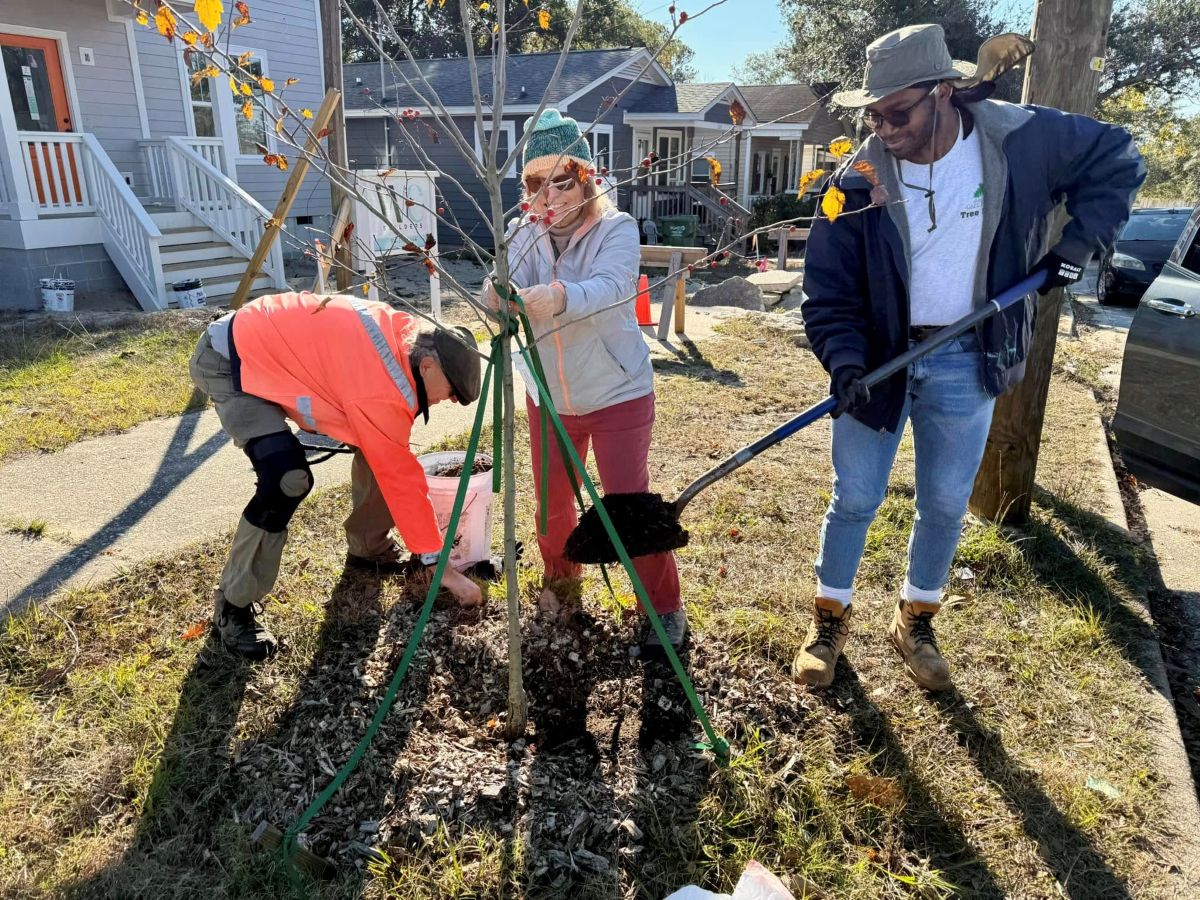
THE EDGE of the sea is a strange and beautiful place. All through the long history of Earth it has been an area of unrest where waves have broken heavily against the land, where the tides have pressed forward over the continents, receded, and then returned. For no two successive days is the shore line precisely the same.
From “The Edge of the Sea” by Rachel Carson.
Supporter Spotlight
Countless reviewers and critics have noted through the decades how Rachel Carson’s words above, first published in 1955, were written from the point of view of a scientifically sophisticated observer.
Carson had the knack for describing the various aspects, patterns and lifeforms — many invisible or unknown to all but the most familiar – found on the world’s three types of ocean shore, all three of which, she noted, are found along the East Coast.
Reared in Springdale, Pennsylvania, just northeast of Pittsburgh, the scientist and writer is best known for her 1962 book, “Silent Spring,” which stirred controversy and raised awareness about pesticides’ harmful effects when used indiscriminately. Her book is often credited as the spark that ignited the environmental movement.
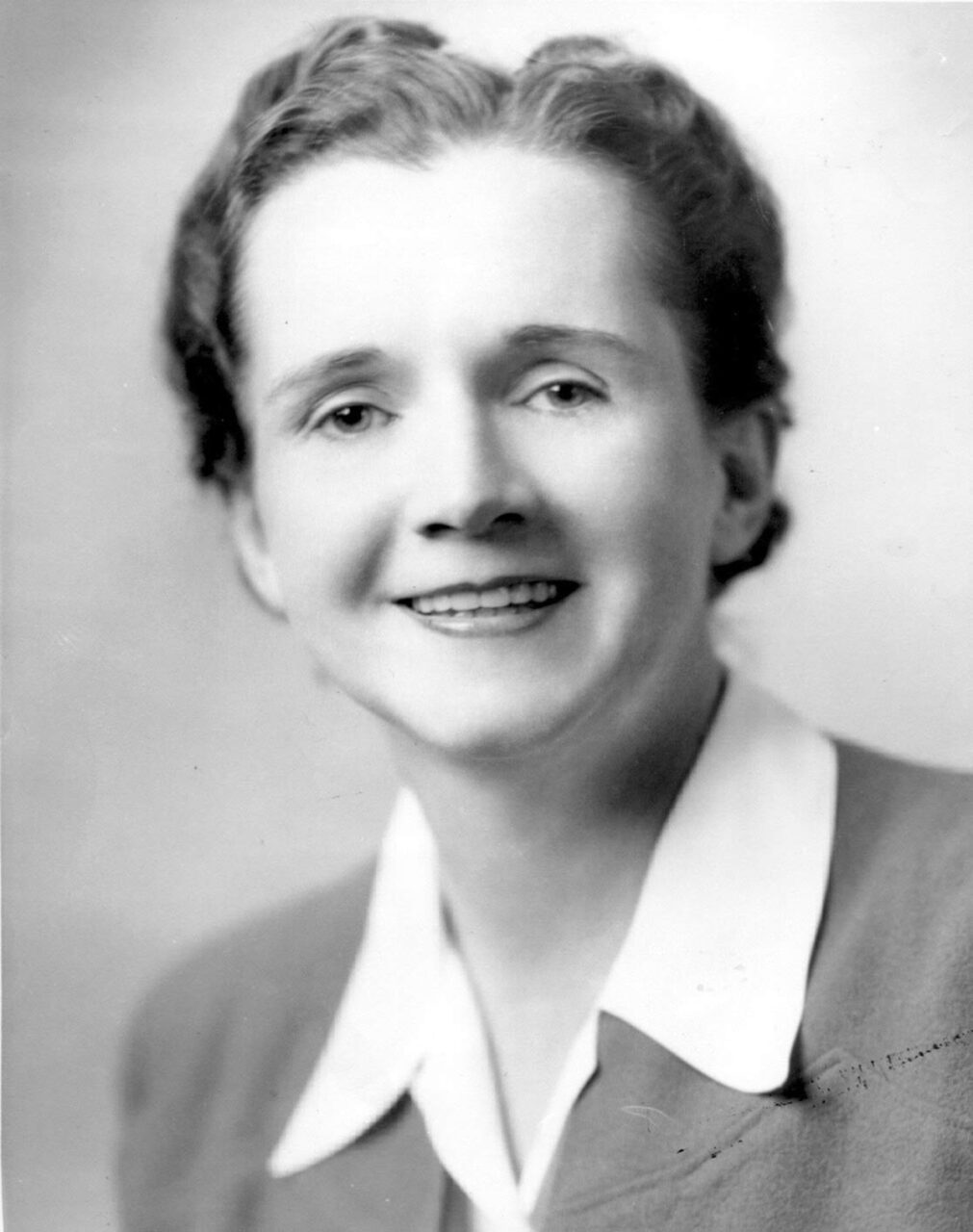
In the years just prior, Carson, a marine biologist with a long career in federal service, had written a trio of bestselling, highly praised books about seashores and sea life, culminating in 1955 with “The Edge of the Sea.”
“Miss Carson, thanks to her remarkable knack for taking dull scientific facts and translating them into poetical and lyrical prose that enchanted the lay public, had a substantial public image before she rocked the American public and much of the world with ‘Silent Spring,’” according to Jonathan Norton Leonard’s report of her death as published April 15, 1964, in the New York Times.
Supporter Spotlight
Carson was 56 when she died.
Among the many still enchanted with Carson are Bland Simpson, a distinguished professor of English and creative writing at the University of North Carolina Chapel Hill, songwriter and pianist for The Red Clay Ramblers; Jim Wann, a theatrical writer, musician and leading man; and Don Dixon, a highly regarded record producer, songwriter and musician.
Together, these three form the Coastal Cohorts, whose collaborative comedic musical, “King Mackerel and the Blues Are Running; Songs and Stories of the Carolina Coast,” is now in its 40th year.
Tickets are on sale for this year’s performances Oct. 24-25 in Morehead City. The scheduled shows were announced earlier this spring.
The musical presents aspects of coastal life through song and onstage hilarity, but also conveys, more subtly, environmental themes, without lecturing or moralizing. The loose plot involves our fishing-buddy “Cohorts” who set out to help save their favorite destination and its proprietor from the wrecking ball as wielded by prospective condo developers.
The production debuted Dec. 8, 1985, at Rhythm Alley in Chapel Hill. While much of that original performance remains part of the show, the Cohorts have continued over the years to write and perform new songs, weaving them into the show. This most recent song, a reverent homage to Carson, “Edge of the Sea,” that took two decades to develop, may work best as an epilogue, according to the Cohorts.
The song was inspired in particular by Carson’s research in North Carolina in the late 1930s and 1940s, Simpson recently told Coastal Review. That research informed her book “The Edge of the Sea” and its chapter about Bird Shoal in what is now the Rachel Carson Reserve just south of Beaufort.
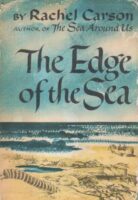
“We just happened to have pulled it together when one of the very things that Rachel Carson caused to come into being, the Environmental Protection Agency and the laws that it worked under, when those things are being just taken part,” Simpson said.
The song’s development began with a staging of “King Mack” at East Carolina University, Simpson explained during a recent video call with Dixon, Wann and Coastal Review.
“Well, Don and I were playing ‘King Mackerel’ in East Carolina on one of those literary homecomings that (distinguished ECU English professor) Margaret Bauer was sponsoring every year for about 10 or 12 years,” said Simpson. “And there was a little workshop, and they asked us to maybe bring in something new we were working on. And I don’t know how we determined Rachel Carson, but we each brought in a verse. It wasn’t a complete song.”
Wann was unable to be at that particular event, but when he was told about the project, he let his fellow Cohorts know that he had already begun working on his own song about Rachel Carson.
“Jim kind of took the lead, and it grew over some time,” Simpson said.
And grow it did. The song clocks in at 8 minutes, 29 seconds, commencing with ocean sounds and a lush choir of female voices. Those are the voices of Dixon’s wife Marti Jones, as well as Rebecca Newton of North Carolina’s own Rebecca & the Hi-Tones, Durham educator Pattie Le Sueur, and Simpson’s fall 2024 songwriting students at Carolina, Madeline Lai and Maggie Thornton. The Cohorts provide the rest, including lead vocals, with Dixon on bass and guitar, Simpson on piano, and Wann on guitar.
“We went up to Chapel Hill where we were in a studio with those women singers Bland had recruited from his class, and then Rebecca and Pattie, who I knew, and Don was mentoring us from Ohio, through the magic of modern technology,” said Wann. “It was very much a stage-by-stage process to arrive at what we’ve got now.”
In its early development, Wann’s working title was “Kayaking with Rachel,” because, he said, “I read that she used to kayak, you know, when she was in her time around the North Carolina shores. And I thought that was interesting, because that was before — the song says, ‘She was kayaking before kayaking was cool,’ and that kind of was my jumpstart into the song.”
Dixon, at some point, had noted the need for an intro to set up the rest of the song, specifically referencing Carson’s own words: “The edge of the sea is a strange and beautiful place,” said Wann.
“And you just kind of tossed that out,” Wann said to Dixon, “So I just adapted some of her phrases, those words, and that’s how that came into being.”

The song elevates her words “in this kind of Greek chorus sort of thing,” which is the way Dixon, the track’s arranger and producer, said he was hearing it.
And the story contained in the song is one of triumph over challenges, also reflective of Carson’s life. She was a hero, “not just of environmentalism, but the history of humanity,” Simpson said.
“She was a saint and really gave her life,” Simpson continued. “She was dying of cancer when she went to Congress and was put upon, pushed upon. She did not give — she didn’t give an inch.”
Wann said those aspects of her personality, her history and her quiet, solitary life are woven into the song’s first chorus. “That was kind of the first stage,” he said.
“This is creation, don’t let indifference take it away from you
This is your water, don’t let complacency take it away from you.”
— “Edge of the Sea” by the Coastal Cohorts, © 2025 Wann/Dixon/Simpson
Simpson said the above chorus is a call to action. There will always be forces working against the clean and the pure, he said.
Beloved, smeared
In 1962, when Carson’s “Silent Spring” was published, chemical and pesticide manufacturers attacked her, funded disinformation campaigns and labeled her a likely communist. But Carson’s books had already endeared her to the public.
“That book ‘Silent Spring,’ and even her first ocean books sold in the millions,” Dixon said. “She was beloved by certain people; she was just vilified by industry. It was definitely a smear campaign.”
Those trying to smear Carson may, to many, resemble the evil Greed Heads threatening the coastal environment and culture in the “King Mack” storyline.
Greed Head sees a high-span bridge and tollbooth turnstiles
Cohort sees a big sand dune ridge and nothing for miles and miles.
— “Corncake Inlet Inn” by the Coastal Cohorts
Like the antagonists in “King Mackerel,” the “Greed Heads,” heartless condominium developers looking to turn the fictional Miss Mattie’s Fish Camp into high-rise condos, the chemical industry in the 1960s went to great lengths to protect its golden goose by trying to discredit Carson.
Wann noted that some in Congress tried to dismissed her, as well.
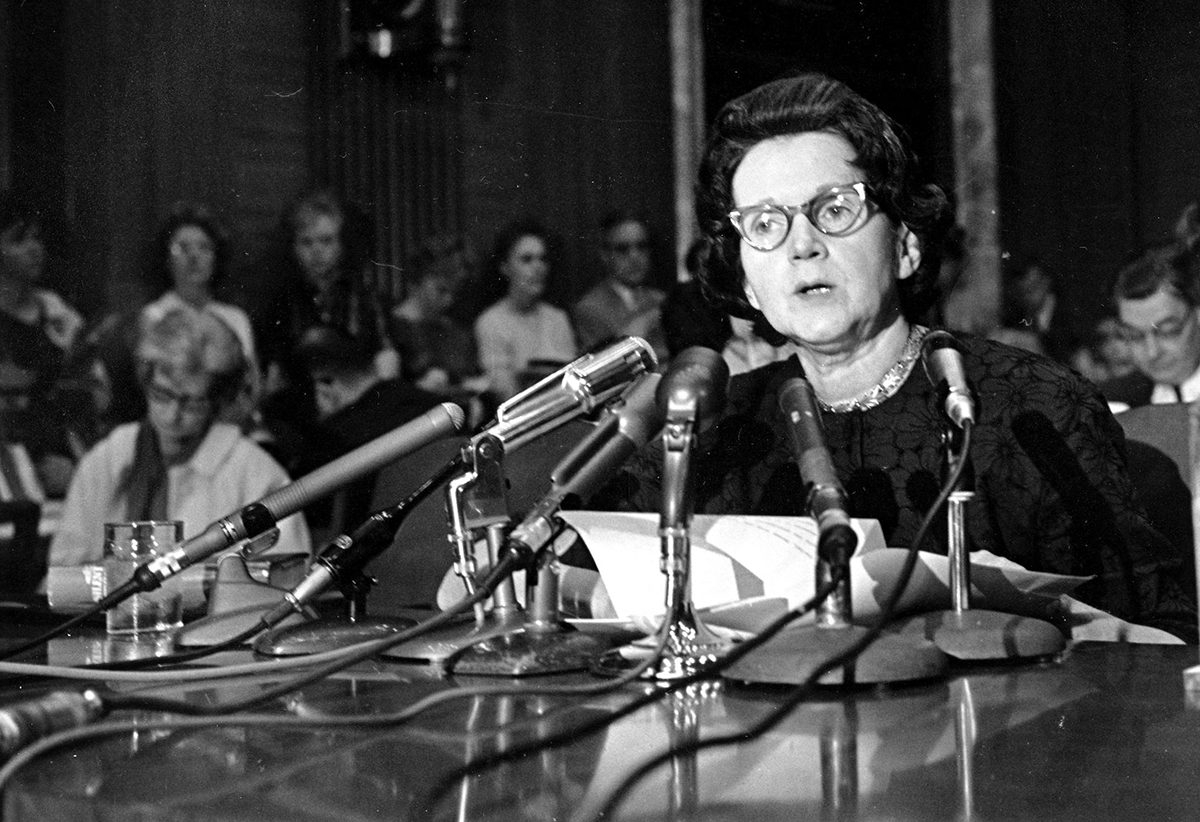
“They just said that her science was wrong and that she wasn’t telling the truth,” Wann said. “The truth did prevail.”
In 1963, when Carson went before Congress to advocate for federal controls on pesticide use during hearings on pollution, she explained how chemical poisons had contaminated the environment humans depend on — water, soil, air and vegetation.
“It has even penetrated that internal environment within the bodies of animals and of men,” Carson said in her remarks on June 4 that year. She cited numerous sources: radioactive waste and waste from laboratories and hospitals, fallout from nuclear explosions, municipal wastewater and chemical waste from homes and industry.
“When we review the history of mankind in relation to the Earth we cannot help feeling somewhat discouraged, for that history is for the most part that of the blind or short-sighted despoiling of the soil, forests, waters and all the rest of the Earth’s resources. We have acquired technical skills on a scale undreamed of even a generation ago. We can do dramatic things and we can do them quickly; by the time damaging side effects are apparent it is often too late, or impossible, to reverse our actions,” Carson told Congress. “I have pointed out before, and I shall repeat now, that the problem of pesticides can be properly understood only in context, as part of the general introduction of harmful substances into the environment.”
Simpson noted that there are echoes of those times in the current political environment, in which “radical capitalism” is threatening to undo regulations that were based in science.
“It’s an irony, a terrific irony, that the Environmental Protection Agency having been created in no small part because of the wisdom and intelligence that ‘Silent Spring’ brought forth, that the EPA is now, under the new administration, is now being run by undoers, deregulators and representatives of the chemical industry and so forth, and so we’ve sort of come full circle and back to status quo, antebellum and before Rachel’s work helped cause the EPA,” Simpson said.
But, Simpson added, the new song is as uplifting as Carson’s writings.
“Rachel Carson’s spirit is anything but depressing,” Simpson said. “She found miracles in every speck of anything she ever picked up on the beach. And that’s why we love her so, because her heart informed her science about the value and the interconnectedness of all these things. ‘One creature tied to another,’ I think, is Jim’s lyric.”
Wann said he didn’t recall “making anything up” in writing the song, aside from minor paraphrasing of Carson’s words.
“Pretty much all those words are in the preface of ‘Edge of the Sea,’ the very first few pages of the book,” Dixon said.
Dixon acknowledged the song is a celebration of Carson, but is also it’s “sort of a cautionary tale,” especially for those unfamiliar with her work, the fragility of fish and wildlife, and how her advocacy led to a ban on the pesticide DDT.
“They don’t realize she spawned the environmental movement as we know it today,” Dixon said. “And it really was kind of just her doing. I mean, she was very solitary. She was not part of a big group of people working on this problem that she recognized.”
Carolina connections
Carson’s connections to coastal North Carolina were made when the region looked quite different. In 1947, during her tenure with the U.S. Fish and Wildlife Service, she was tasked with writing a visitor brochure for Mattamuskeet National Wildlife Refuge in Hyde County. Simpson said it was “very unlike the standard flat, elemental tour guide.”
It reflected the way she saw the world. “She clearly devoted herself to science writing and everything she did,” he said.
“When we first wrote the show, I don’t think we fully appreciated the light touch as far as environmental matters,” Simpson explained. “In terms of culture, we were looking at our memories of, you know, the old-style hotels and everybody eats at a long table. It wasn’t a world of high-rises and condos and all that.”
“King Mackerel” follows the Cohorts’ efforts to preserve that era and help their fictional friend, Miss Mattie, save her beachfront hotel and pier. The conflict is outlined in “Corncake Inlet Inn” from the original soundtrack.
“We put the contrast in the lyrics: ‘Greed Head sees a barrel of bucks … Cohort sees the geese and the ducks that won’t come back in the fall,’ the change of environment. That’s all true,” Simpson said.
It’s a contrast that’s meaningful to two area nonprofit organizations that have for decades hosted the Cohorts’ performances in Carteret County.
Todd Miller, who in 1982 founded the North Carolina Coastal Federation, which publishes Coastal Review, understood that meaning early on – perhaps, according to Simpson, before the Cohorts had fully grasped it themselves. The Coastal Federation works to protect, restore and preserve coastal water quality and habitats, which are critical to the way of life here.
“Their music and stories are beautifully aligned with our mission — capturing why people love and cherish our coast, even as that love can sometimes lead to its overuse and degradation,” Miller said. “They first performed for the Coastal Federation in the mid-1980s, and since then, we’ve all together become part of a larger coastal cohort. Their appeal runs deep, touching the hearts and minds of people from all walks of life — those of us whose lives are enriched by a coast that is a wonderful place to live, visit, work, and play.”
It’s all those things and a deep culture going back centuries, said Karen Willis Amspacher, director of the Core Sound Museum and Heritage Center on Harkers Island.
“It’s everything we stand for,” Amspacher said. “Corncake Inn is all about place and tradition and memories and holding on to youth and the beach and the wildness of it all.”
She said the connections ring even truer now than years ago.
“The Greed Heads have multiplied,” she said.
Wann said he was recently thinking back on the Cohorts’ 40-year journey, the connections made and the introduction of new songs along the way.
“It’s been just really especially rewarding that there’s still this growth element to it,” Wann said. “Even doing the show, it doesn’t feel tired or old, because partly, I think we’ve heard so many times that someone will come up and say to us, some young person will say, ‘We used to listen to your music on the way to the beach. It was the only music that my parents and us kids could agree to listen to.’ Now we’ve met the third generation, parents and grandparents who know about ‘King Mackerel’ and at some point, someone said to us, ‘You know, you started out singing about the culture here, and now you’re part of the culture.’”
Updated to correct the name of Miss Mattie’s Fish Camp.


